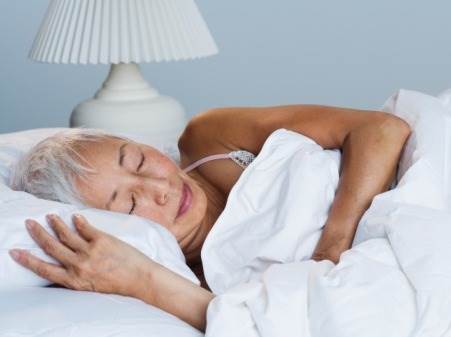

Insomnia in Older Adults
by David Merrill
Insomnia is more frequent in older adults than in any other age group, and can lead to a number of brain health issues. Insomnia is a common sleep disorder where people may have trouble falling asleep, staying asleep, or getting good quality sleep.
Overview
- 28% report difficulty falling asleep, and 46% both falling & staying asleep.
- Leads to deterioration in daytime alertness and functioning.
- Sleep changes characteristic in late life include:
- decreased total sleep time
- frequent arousals (increased % of Stage 1 and Stage 2 sleep)
- decreased deep sleep (3 and Stage 4 sleep)
- decreased rapid eye movement (REM) latency & amounts
- a tendency to exhibit redistribution of sleep (e.g., napping during the day).
- Many of these sleep changes are similar to those that occur in depression and dementing disorders, although not as severe.
- Older persons are also more likely to phase-advance in the sleep cycle, with a phase tendency toward “morningness.”
- Determining underlying causes of insomnia and exploring sleep hygiene key.
Sleep disturbances leading to insomnia in the older adults
- Primary insomnia
- Sleep-disordered breathing (i.e., sleep apnea)
- Nocturnal myoclonus or periodic leg movements
- Sleep–wake schedule disorder
Secondary causes of insomnia
- Sleep problems secondary to medication use
- Anxiety disorders
- Mood disorders
- Dementing disorders
- Comorbid physical illness (e.g., congestive heart failure, chronic obstructive pulmonary disease, nocturia)
Treatment
For older adults struggling with sleep issues, there are some steps you can take. Adjusting your sleep habits and pinpointing any issues that may be contributing to your insomnia, such as stress, medical conditions, or medications, can help restore quality sleep in many people. However, if sleep disturbance continues, your doctor may recommend cognitive behavioral therapy (CBT), medications or both, to help improve sleep.
About the Author

David Merrill
David Merrill, MD, PhD, is director of the Pacific Brain Health Center at Pacific Neuroscience Institute. As an adult and geriatric psychiatrist, he specializes in treating patients suffering the behavioral health sequelae of age-related neurodegenerative disorders such as Alzheimer’s disease and Parkinson’s disorder, as well as alleviating depression and cognitive dysfunction within the context of aging.
Last updated: September 23rd, 2023